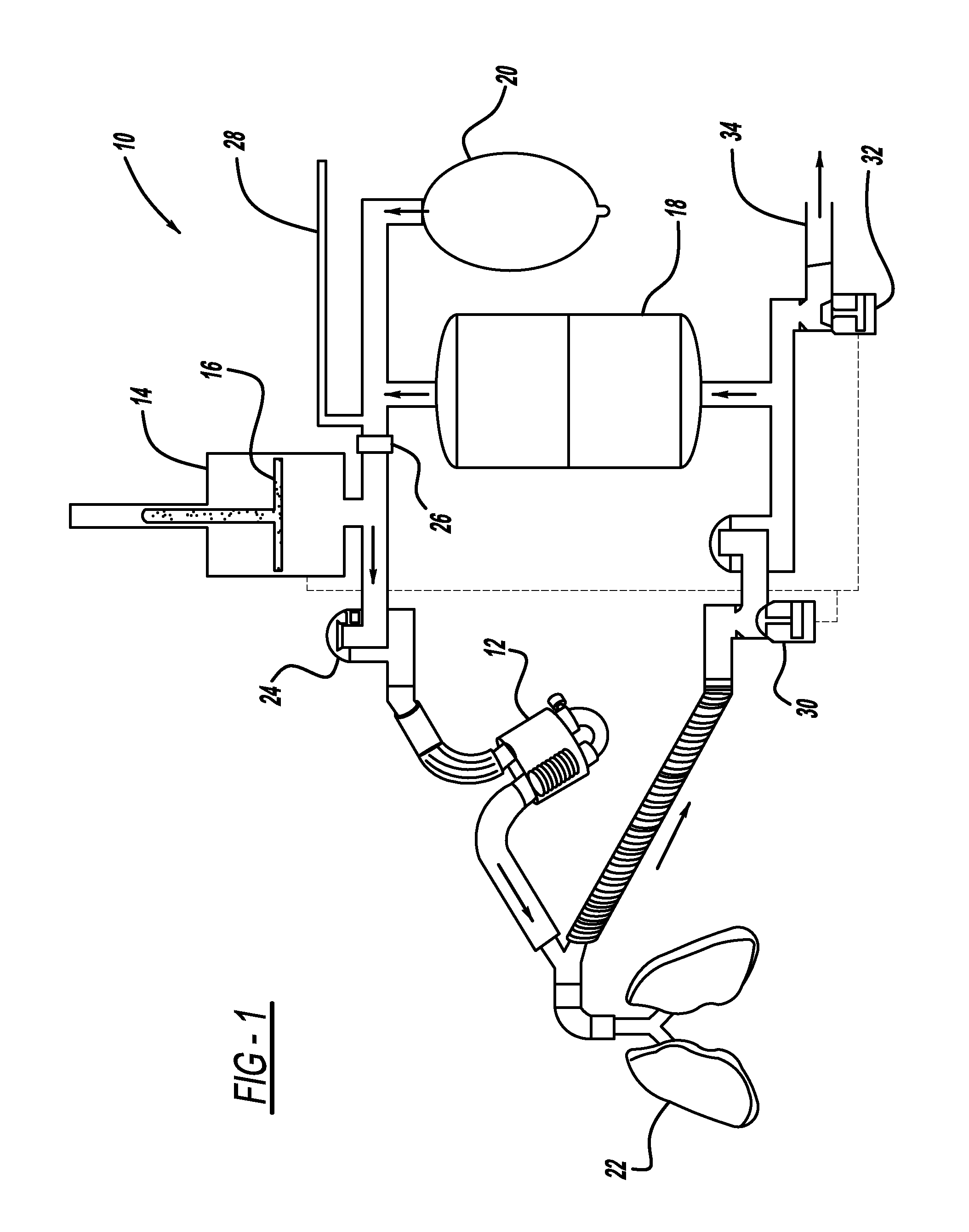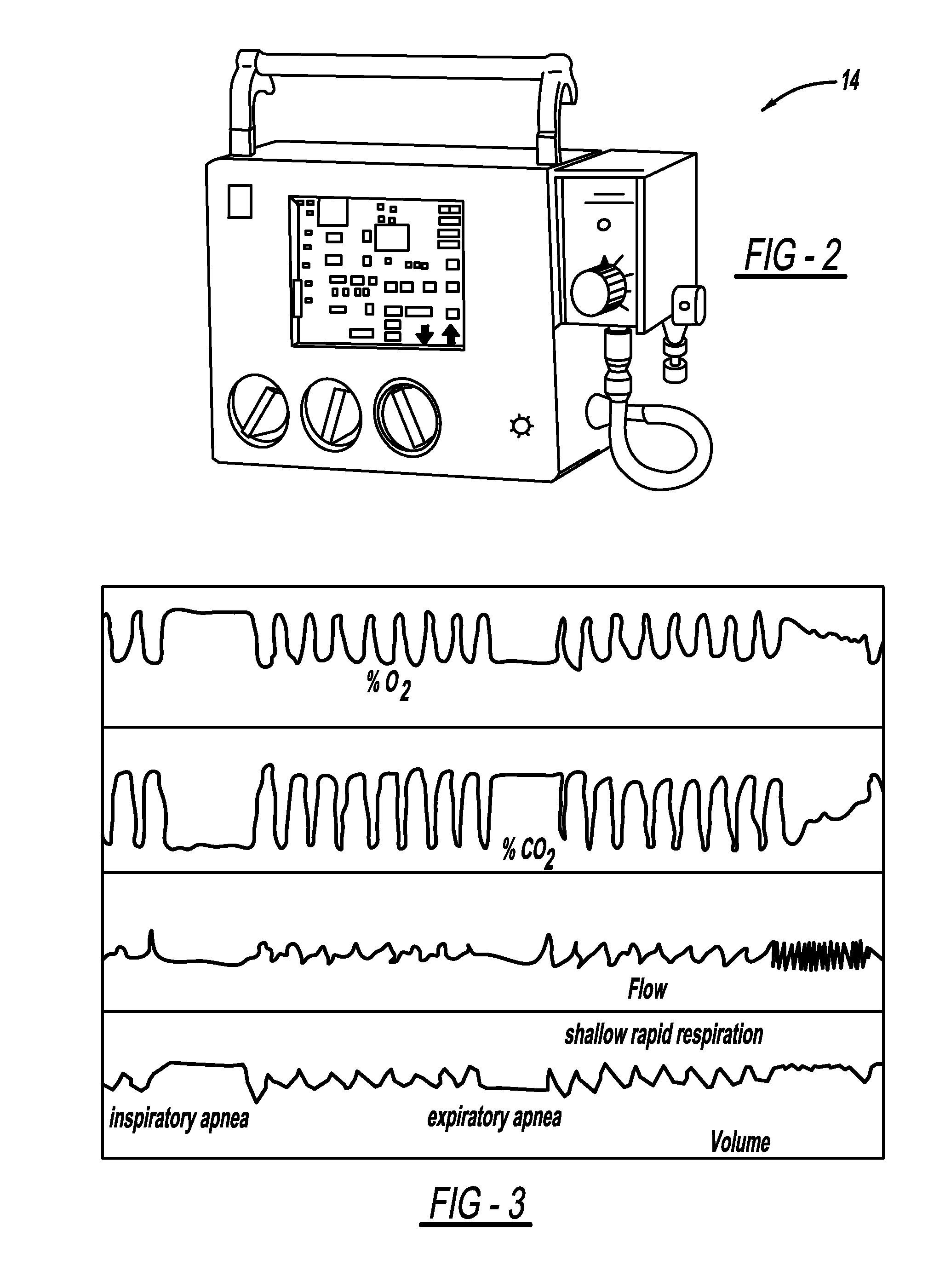Hyperthermia Assisted Radiation Therapy
a radiation therapy and hypoxic tumor technology, applied in the field of radiation therapy, can solve the problems that patients with hypoxic tumors invariably experience poor treatment outcome, and achieve the effects of enhancing clinical outcome, reducing treatment fractions, and improving local tumor control
- Summary
- Abstract
- Description
- Claims
- Application Information
AI Technical Summary
Benefits of technology
Problems solved by technology
Method used
Image
Examples
example 1
In Vitro Investigation of HART Applied to Lung Adenocarcinoma Cells
[0034]Modest sensitization of A549 lung adenocarcinoma cells was evident after a 10 min treatment of 45° C. (surviving fraction (SF)=0.81±0.03). This was markedly increased by 30 minute (SF=0.12±0.01) and 60 minute treatments (SF=0.002±0.0001). Radiosensitization was demonstrated after 2 Gy X-irradiation with simultaneous heat exposures. Survival was reduced from 0.81±0.03 (heat only) to 0.34±0.03 (heat+radiation) for a 10 minute thermal treatment (FIG. 6) and from 0.12±0.01 (heat only) to 0.01±0.002 (heat+radiation) for 30 minute thermal treatment. By comparison, a single x-ray dose reduced survival to 0.64±0.03.
[0035]These thermal-radiosensitizing effects may translate into a complex 3D tissue model to establish and define the role of blood flow in regulating temperature in solid pulmonary tumors and surrounding normal lung tissue. A murine model was used for pragmatic reasons of cost and to utilize the small anima...
example 2
In Vivo Investigation of HART Applied to Small Animals
[0036]A model using orthotopic implanted human pulmonary tumors can be employed. The A549 adenocarcinoma cells were chosen for a previous in vivo tumor growth delay studies because these tumors are relatively resistant to many cancer therapies and are highly metastatic to the lungs from subcutaneous implants. However, tumors can be established directly in the lungs of female nude mice. As shown in FIG. 7, an implantation technique for the growth of human lung cancer cell lines in the bronchioloalveolar region of the right lung via intrabronchial (i.b.) injection with a syringe 100 into the bronchial tubes 102 is employed. The shaded area 104 in FIG. 7 represents the caudal lobe of the right lung, the area where the majority of tumor cells are localized following i.b. implantation. Tumor-bearing animals implanted with this technique become progressively cachexie and dyspneic following implantation. Tumors grow predominately in the...
example 3
Clinical Implementation
[0039]The system 10 described is employed on the investigations on small animals where the air volume circulated is relatively small and easy to control. For the clinical translation application, where human subject is involved, a heated breathing tube is employed to minimize air heat loss due the larger air volumes, and it is incorporated in the ventilator 14 and temperature control feedback loop 70.
[0040]Respiratory parameters (volume, flow, inhalation / exhalation pressure, CO2, O2 concentrations, temperature) are measured by the machine's mouthpiece 52 and results are displayed on the control room monitor, as displayed, for example, in FIG. 3. This provides a combination of parameters that can be used for gating a linear accelerator that provides a radiation source for radiotherapy.
[0041]If gating is employed (˜5% of lung cancer cases) the clinician and the patient work together to establish the appropriate parameter to gate based on the patient's condition....
PUM
 Login to View More
Login to View More Abstract
Description
Claims
Application Information
 Login to View More
Login to View More - R&D
- Intellectual Property
- Life Sciences
- Materials
- Tech Scout
- Unparalleled Data Quality
- Higher Quality Content
- 60% Fewer Hallucinations
Browse by: Latest US Patents, China's latest patents, Technical Efficacy Thesaurus, Application Domain, Technology Topic, Popular Technical Reports.
© 2025 PatSnap. All rights reserved.Legal|Privacy policy|Modern Slavery Act Transparency Statement|Sitemap|About US| Contact US: help@patsnap.com



